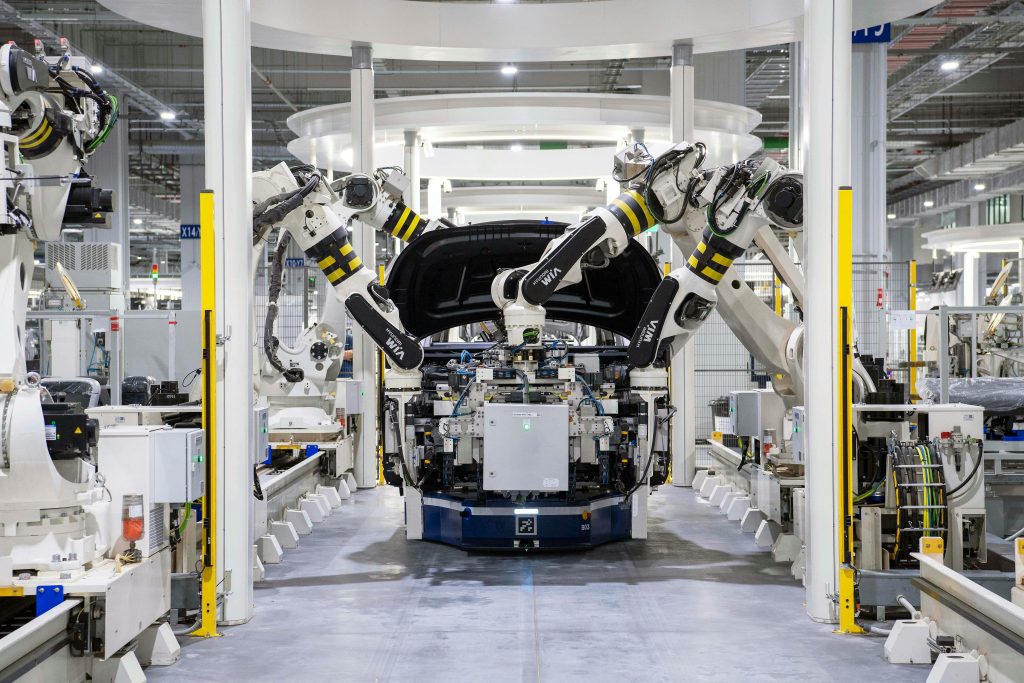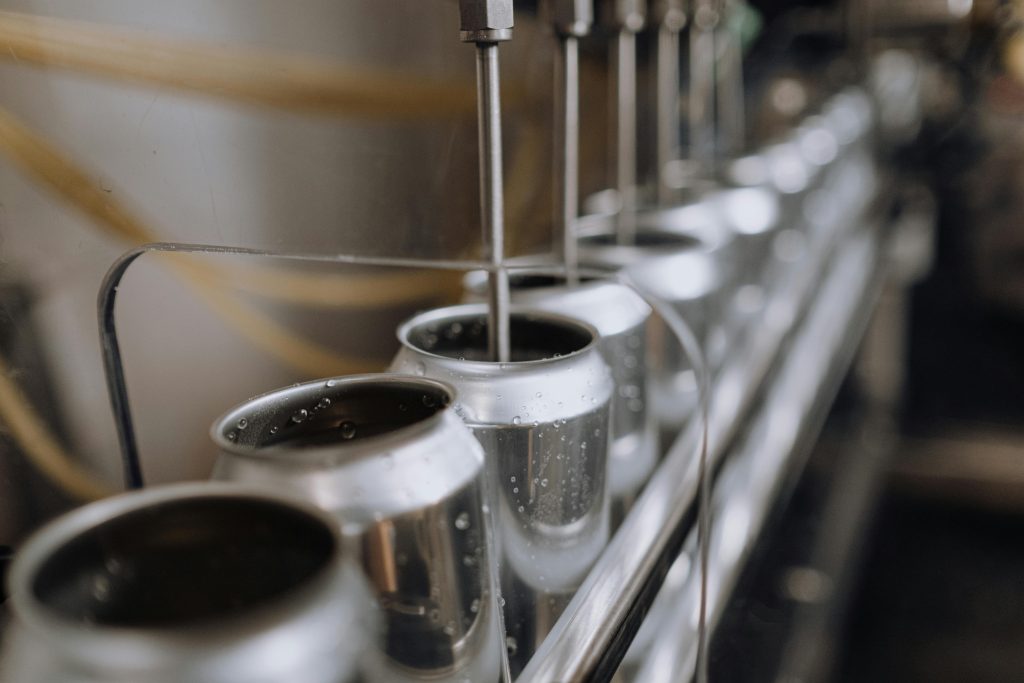
Robotic Packing Lines: Predictive Automation in Dark Kitchens
1. Dark Kitchens: Introduction to the Primary Characteristics and Significance
Over the last few years, at an accelerating pace, the notion of dark kitchens transformed from a niche trend into one of the key novelties in the modern foodservice and delivery business. Celadonsoft, as a remote player in the HoReCa IT-solutions market, finds it relevant to explore in more detail what is going on here and why dark kitchens are emerging nowadays.
First, what exactly are dark kitchens? They are commercial kitchens minus a front-of-house dining area, used solely for food preparation and packaging for delivery by online mediums. The major benefit is optimizing bulk order quantity and not incurring front-of-house costs.
The major descriptive features of dark kitchens can be summarized as:
- No direct customer service. There is cost and logistics saving with no dining hall.
- Multi-brand format. Multiple cuisines and concepts can be made at the same time from a single kitchen.
- Digital-first orientation. Customers order only through websites and apps, which are connected to kitchen management systems.
- Velocity of high order turnaround. Workflow automation and streamlining of processes are key characteristics.
- Flexible, scalable. Modular construction allows for seamless scaling of manufacturing capacity in both directions.
Why is this model so popular now? The landscape of the food and logistics sector has been revolutionized under the weight of a multitude of pressures:
- Food delivery demand has exploded, driven by the pandemic and shifting consumer behavior.
- There are new innovative digital platforms by which operators can manage orders with precise accuracy.
- Minimizing operational expenditures is crucial in a competitive environment.
- Menus can be updated and new technology introduced quickly, without the hassle of redesigning a traditional restaurant.
For IT workers in web apps and robotics, dark kitchens are a kind of “testing ground” for the implementation of new innovations. They are not actually kitchens — these are entire ecosystems, where data analysis, automation, and smart planning converge to create new models for running restaurant businesses.

2. Robotic Packaging Lines: What are They and Why Do They Matter?
In an otherwise dark kitchen universe where everything is humming along at breakneck speeds, robotic packaging lines have been a game-changer. So what’s the story behind the name?
Basically, robotic packaging lines are a collection of automated units and systems that accomplish the whole process of packaging — sealing and marking, weighing and sorting. Unlike traditional conveyors, robotic packaging lines utilize intelligent robots which can be set to serve different package shapes, materials, and order quantities.
Why are they crucial in the context of dark kitchens?
- Process optimization. Robots do the repetitive work, avoiding human error and restricting manual risk.
- Higher productivity. More orders are processed within a limited time frame because of automation.
- Lower cost of operation. Cost of labor and material is reduced as robots accurately measure and reduce waste.
- Better quality standards. Consistent packaging is key to freshness and branding.
- Scalability with ease. Lines can be easily reconfigured for new items or order surges — ideal in a fluctuating market.
Robots not only speed up packaging — robots revolutionize the whole process from kitchen to consumer. That is the type of innovation that will propel dark kitchens into a new era of competitiveness and efficiency.
3. The Benefits of Robotic Packaging in Dark Kitchens
Shifting manual labor to auto mode is not a flash in the pan, but a well-thought-out choice. Let’s go through the most significant advantages dark kitchen operators have when they implement robotic packaging lines.
- Continuous speed and operation around the clock. Human hands get tired, their pace slowing during rush hours. Machines work day and night with no break, orders flowing at the same pace.
- Error minimization. Hand packing makes errors — wrong closure, packages out of place, wrong labels on packages. With integral sensors and control software, automation is nearly error-free.
- Conservation of space and resources. Space-conserving robots and modular design occupy kitchen space — the difference in the middle of cities.
- Increased hygiene standards. Less human contact with food minimizes the risk of contamination, especially during pandemics and where food safety is at the forefront of priorities.
- Lower costs of training and turnover of staff. Staff can be trained to operate robots faster and more efficiently than traditional methods, and automated processes reduce dependency on skilled packers.
- Instant adaptability to incorporate new products and orders. Robotic machines in present times can be reprogrammed instantly to process new orders, packaging, or customer requirements, with no retooling costs involved.
4. Technological Innovation: From Concept to Realization
In the dark kitchens, robotic packaging is no longer a theory — it’s now a game-changer in food delivery. Witness this revolution within the industry, says Celadonsoft: high-tech technology at every stage in the packaging line is the recipe for robotics success.
Why is this innovation taking place? Let’s analyze the tech ingredients that are making robotic packaging a reality:
- Modular robots for manipulators. Extremely flexible, they can be easily retooled for any of a variety of different configurations, effectively picking and moving foods gently without breakage.
- Machine vision systems. Not cameras, but intelligent systems that inspect package shape, size, and product quality — acting like a virtual gatekeeper, cutting down human error.
- Smart management algorithms. With AI and machine learning, packaging lines are given “brains” that govern optimal speeds, learn product information, and react in quick time to changing situations.
- Simplified IT interfaces. Easy control, process transparency, and distant transparency are luxuries no longer — they’re a necessity. Fitment to installed base ERP and WMS provides easy integration between orders and packaged-up completion.
Predictive packing robots — an emerging subset of predictive packing technology that combines robotic automation with kitchen AI — are beginning to analyze live order data and automatically re-tune packaging parameters on the fly, squeezing even more efficiency from the line.
5. Robotics’ Influence on Speed of Service and Quality
Let’s see how these technologies destroy traditional traditions:
- Speed of packaging increases exponentially. Robots take no time off or vacations, causing no bottlenecks and accelerating kitchen production. Celadonsoft has achieved productivity gains of as much as 200 % in some projects.
- Uniform quality. Each order is constructed the same — something needed for big brands and chains. Machines ensure spotless sealing and cleaning, lowering complaints and product returns.
- Human error decreases. Bypassed steps and mispackaging are eliminated by automation, eliminating opportunities for delivering incorrect order or incomplete meal.
- Savings in labor. Daring setups enable you to redeploy staff to creative or strategic roles, critical in today’s talent-constrained economy.
But remember: proper training and configuration is absolutely imperative at the rollout stage. It takes precise introduction only with proficient AI and equipment to be an efficient, high-capacity production facility in dark kitchens.
6. The Future Revealed: How Robotaxis Will Transform Food Delivery
Food delivery in the near future without excessive application of robotics is unimaginable. Dark kitchens, as the motorways of high-standard and optimized meal manufacturing, are becoming a blend of culinary art and high-tech technology. We at Celadonsoft are convinced: robotic packaging will not only make the process better but flip every process in the process of food creation and delivery on its head.
Why is this not just another fad?
- Strong operating costs. Robotic technologies cut payrolls in half but provide consistent speed and quality with or without manual intervention.
- Growth resistance. Automate and expand capacity with ease — no hiring binge with higher or messy bills.
- Bash of AI and analytics. Intelligent system robots forecast peak orders, minimize downtime, and optimize resource use.
7. Success in Real Life: Testimonials and Examples
To take it a step further from projections, let’s look at real-world cases already established by our partners.
Case 1: FoodDrive Dark Kitchen, Moscow
Following the installation of Celadonsoft robots, productivity levels in processes skyrocketed. The mean packaging time was reduced from 120 to 45 seconds, defect rates decreased by 30 %, and overall order throughput was increased by 20 %. Automation was referred to as “the turning point” for business growth by management.
Case 2: FastBite International Chain
Implementing our system within some European kitchens enabled real-time performance and central management, as well as analysis. The cost of labor went down, productivity was up. The CEO credits Celadonsoft’s innovations as being the driver that boosted business expansion into new geographies.
These testimonials speak for the adaptability of such solutions and illustrate the way in which robots are transforming everyday behaviors — offering stability to complement a competitive edge.
8. Challenges and Barriers: What’s Holding Back Widespread Automation
Marvelous as they are, the path to full robotics is not an easy one. Several issues are immediately apparent:
- Huge up-front investment. Hardware and software costs are astronomical, keeping out the lesser players.
- Integration of legacy IT. Dark kitchens are typically constructed on stand-alone, legacy infrastructures, thus robot integration means root change and revamps.
- Insufficient skilled personnel. Running and tuning of robotic lines require specialists — an expensive luxury in today’s job market.
- Psychological and cultural differences. Workers fear new machines, the fear of losing jobs or being aggrieved.
- Strict regulatory and hygiene requirements. Automated packaging must meet food safety standards, demanding extra inspections and approvals.
Celadonsoft works with clients on both technical and organizational fronts, helping overcome these challenges. We’re sure: only by combining tech innovation and the human factor can automation succeed and endure.
Consequently — dark kitchen packaging automation has already changed the delivery business. Although there are still issues on the horizon, intelligent planning and technology partners like Celadonsoft are making this a viable possibility and in reach.

9. Conclusion: The Future of Dark Kitchens and the Role of Automation
With food delivery markets reaching record highs, dark kitchens are not a fleeting fad — they’re a business asset in waiting. The secret to this revolution is automated packaging, which will revolutionize business on an entirely new scale. Celadonsoft’s perspective is: the future of dark kitchens cannot be disconnected from robots, and this is echoed in in-depth analysis and successful examples.
Let’s discuss three main areas where automation plays a role:
- Cost reduction and productivity gain
Automation eliminates packing time, eliminates mistakes, and prevents mistakes on human intervention — lowering operating expenses immediately. Time and resources and order turnaround exist in flawless balance. - Standardization and quality
Regardless of the orders being large or small, automated lines provide repetitive, high-quality packing. Particularly in a day of stringent sanitary rules and high customer expectations, automation removes human error and cuts defect rates down to a minimum. - Flexibility and scalability
Existing robotic solutions can manage different types of dishes, order quantities, and packaging kits with ease. Production is switched or ramped in minutes without any considerable investment or downtime.
But for all the apparent advantages, don’t miss the problems facing automation:
- Legacy system integration
Dark kitchens mean legacy IT, and hence robotics must be installed with utmost care and at extra cost. - Technical and cultural staff change
Employees must be retrained and require time to learn — an expense of resources and time. - Device upgrade and tech maintenance
There must be constant monitoring and capable personnel to maintain the hum of automated lines.
What’s next?
- AI-driven systems will anticipate demand and maximize real-time packaging streams.
- General modular robot complexes will plug into any dark kitchen production system.
- Priorities based on environment will rise, since automation saves waste and maximizes material usage.
In brief: dark kitchen packaging line automation is not just the next step in evolution — it’s the imperative for adapting to the competition in an ever more dynamic world on a day-by-day basis. Those who get into robotics today are the ones who will be shaping tomorrow’s legislation. Celadonsoft stands ready to walk this road with you — into a future where humans and machines collaborate for the best result.
Leave a Reply
You must be logged in to post a comment.